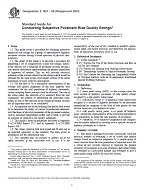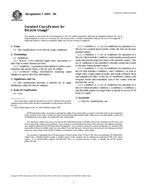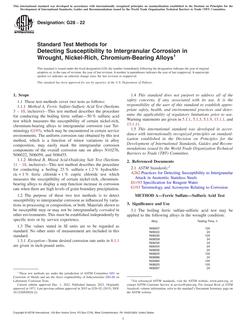1.1 This guide covers the deactivation of fresh fluid catalytic cracking (FCC) catalyst by hydrothermal treatment prior to the determination of the catalytic cracking activity in the microactivity test (MAT).
1.2 The hydrothermal treatment of fresh FCC catalyst, prior to the MAT, is important because the catalytic activity of the catalyst in its fresh state is an inadequate measure of its true commercial performance. During operation in a commercial cracking unit, the catalyst is deactivated by thermal, hydrothermal and chemical degradation. Therefore, to maintain catalytic activity, fresh catalyst is added (semi) continuously to the cracking unit, to replace catalyst lost through the stack or by withdrawal, or both. Under steady state conditions, the catalyst inventory of the unit is called equilibrium catalyst. This catalyst has an activity level substantially below that of fresh catalyst. Therefore, artificially deactivating a fresh catalyst prior to determination of its cracking activity should provide more meaningful catalyst performance data.
1.3 Due to the large variations in properties among fresh FCC catalyst types as well as between commercial cracking unit designs or operating conditions, or both, no single set of steam deactivation conditions is adequate to artificially simulate the equilibrium catalyst for all purposes.
1.3.1 In addition, there are many other factors that will influence the properties and performance of the equilibrium catalyst. These include, but are not limited to: deposition of heavy metals such as Ni, V, Cu; deposition of light metals such as Na; contamination from attrited refractory linings of vessel walls. Furthermore, commercially derived equilibrium catalyst represents a distribution of catalysts of different ages (from fresh to >300 days). Despite these apparent problems, it is possible to obtain reasonably close agreement between the performances of steam deactivated and equilibrium catalysts. It is also recognized that it is possible to steam deactivate a catalyst so that its properties and performance poorly represent the equilibrium. It is therefore recommended that when assessing the performance of different catalyst types, a common steaming condition be used. Catalyst deactivation by metals deposition is not addressed in this guide.
1.4 This guide offers two approaches to steam deactivate fresh catalysts. The first part provides specific sets of conditions (time, temperature and steam pressure) that can be used as general pre-treatments prior to comparison of fresh FCC catalyst MAT activities (Test Method D3907) or activities plus selectivities (Test Method D5154).
1.4.1 The second part provides guidance on how to pretreat catalysts to simulate their deactivation in a specific FCCU and suggests catalyst properties which can be used to judge adequacy of the simulation. This technique is especially useful when examining how different types of catalyst may perform in a specific FCCU, provided no other changes (catalyst addition rate, regenerator temperature, contaminant metals levels, etc.) occur. This approach covers catalyst physical properties that can be used as monitors to indicate the closeness to equilibrium catalyst properties.
1.5 The values stated in either SI units or inch-pound units are to be regarded separately as standard. The values stated in each system may not be exact equivalents; therefore, each system shall be used independently of the other. Combining values from the two systems may result in non-conformance with the standard.
1.6 This standard does not purport to address all of the safety concerns, if any, associated with its use. It is the responsibility of the user of this standard to establish appropriate safety and health practices and determine the applicability of regulatory limitations prior to use.
Product Details
- Published:
- 04/01/2012
- Number of Pages:
- 3
- File Size:
- 1 file , 76 KB
- Redline File Size:
- 2 files , 140 KB


